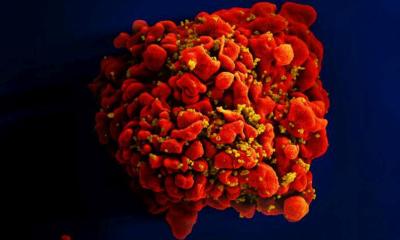Causes of death in AIDS patients
New research from the University of Bristol and a large group of international collaborators shows that Antiretroviral Therapy (ART) continues to dramatically reduce rates of mortality from HIV infection in high-income countries, such that non-AIDS-related deaths exceed AIDS deaths after approximately four years of taking ART.
The study examined data from the Antiretroviral Therapy Cohort Collaboration (ART-CC) which involved nearly 40,000 patients who started ART between 1996 and 2006 in Europe and North America.
Of the 1,876 deaths that occurred in that time, a definitive cause of death could be assigned to 85% of cases. Overall, almost 50% of patients died from AIDS which remains the most common cause of death.
However, although during the first year of treatment with ART the majority of deaths were AIDS-related, because deaths from AIDS decline with time for patients on ART, non-AIDS-related deaths exceeded AIDS deaths after patients had been taking ART for approximately four years.
Lifestyle-related causes of death such as suicide, drug overdose and liver disease (mainly due to hepatitis) were the most frequent causes (15%) of non-AIDS deaths, and the most common non-AIDS cancer reported was lung cancer (4% of all deaths and 37% of all non-AIDS cancer deaths) which was probably associated with smoking.
Increases in rates of deaths from causes associated with aging, such as other cancers (12%) and cardiovascular disease (6.5%), imply that the process of aging will become a dominant factor in HIV mortality in the next decade.
Dr Margaret May, corresponding author on the paper published online in Clinical Infectious Diseases said, "We also found a strong inverse association of rates of AIDS death with CD4 counts – a measure of immune deficiency – at the time of starting ART, which supports arguments for earlier initiation of ART.”
After the year 2000, the team found lower rates of AIDS deaths that may be the result of newer ART regimens having better potency and tolerability.
Interventions to address risk factors for lifestyle-related causes of death, as well as monitoring for and care of diseases associated with old age will be necessary if the full benefit of ART in decreasing mortality is to continue in the second decade of ART.
28.04.2010





